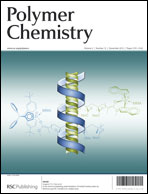Poly(3-hexylthiophene) (P3HT) and poly(3-butylthiophene) (P3BT) cocrystals were prepared by solution casting and the cocrystals show two endothermic peaks in a differential scanning calorimetry (DSC) thermogram. The former endothermic peak is nearly fixed at the melting temperature of pure P3HT, while the latter one shifts gradually towards the P3BT melting point with increased P3BT content. This melting behavior of the polymer cocrystal is novel and different from the studies commonly reported in which the polymer cocrystal generally has one endothermic peak. After extensive analyses, including powder X-ray diffraction (XRD), synchrotron-based two dimensional grazing-incidence XRD, temperature-dependent UV-Visible spectroscopy and temperature modulated DSC, we propose the melting mechanism of P3HT/P3BT cocrystals involving three steps. In the first step, the P3HT component melts at the former endothermic peak around 241 °C. After that, the P3BT component recrystallizes when the coil-like P3HT chains escape from the cocrystal lattices. Finally, the P3BT component completely melts at the latter endothermic peak. These findings are beneficial to the understanding of the criteria for the formation and the melting behavior of polymer cocrystals.

You have access to this article
 Please wait while we load your content...
Something went wrong. Try again?
Please wait while we load your content...
Something went wrong. Try again?


 Please wait while we load your content...
Please wait while we load your content...